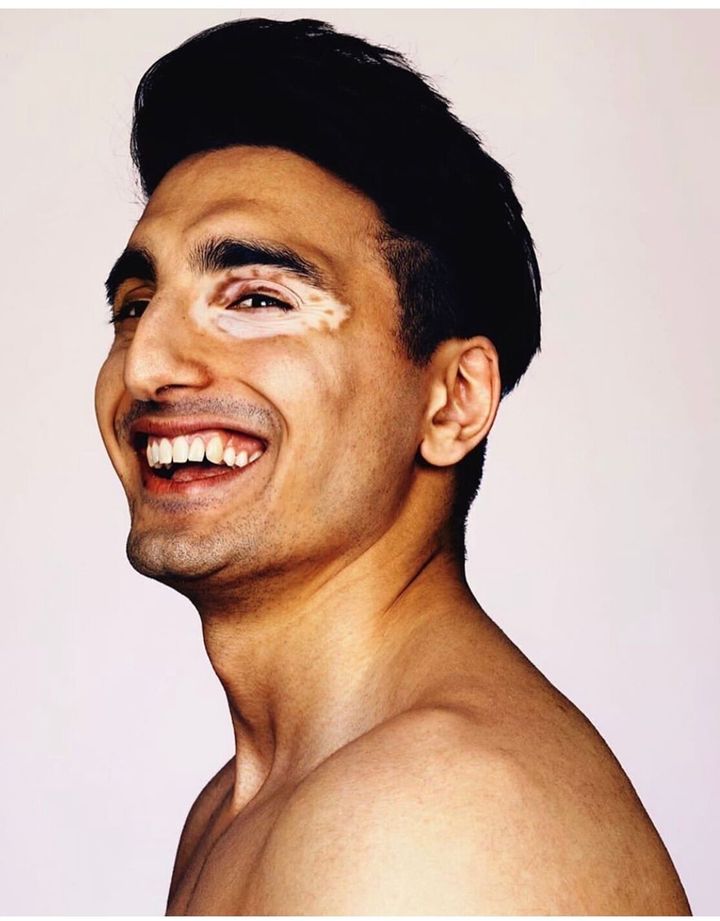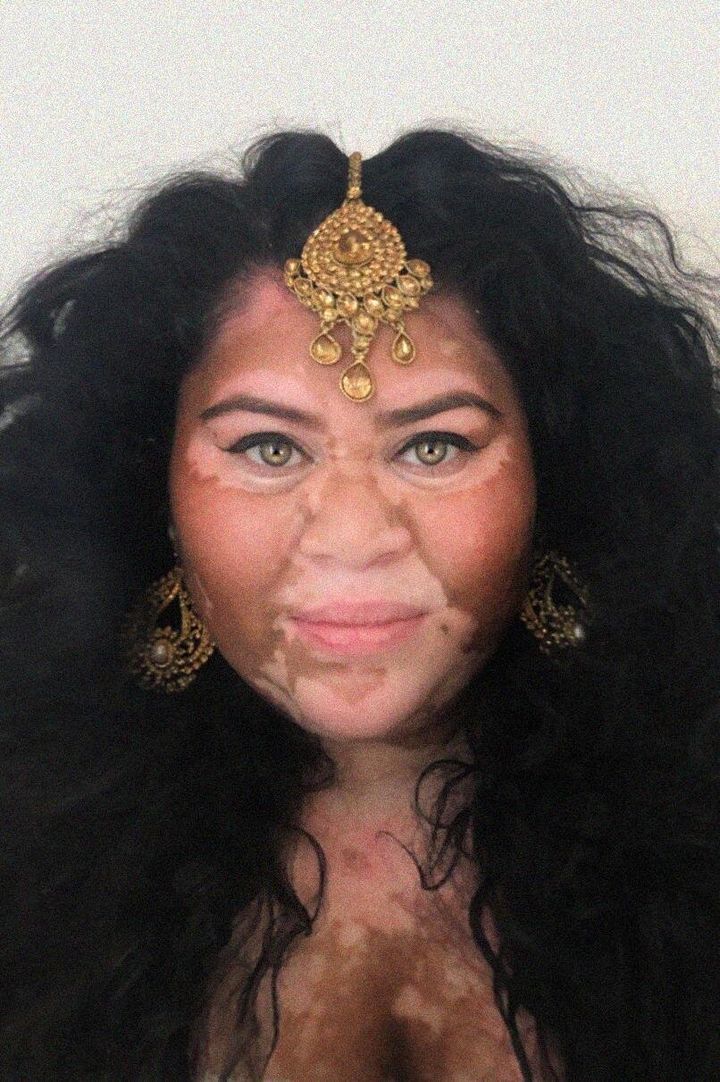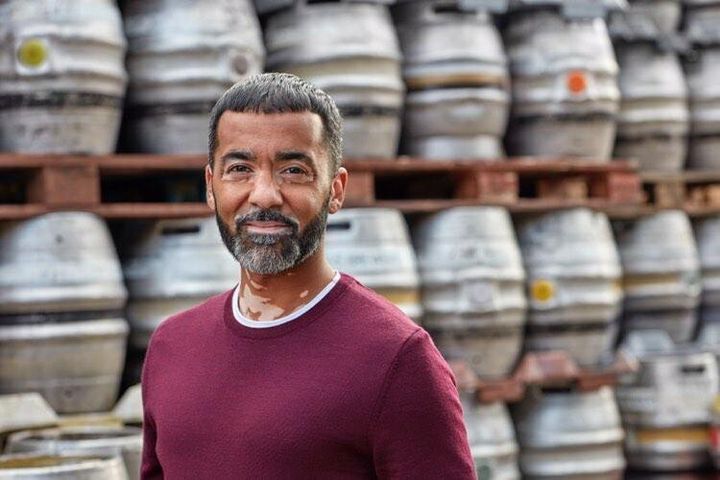Thousands of people took to social media recently for World Vitiligo Day to showcase their skin and what makes them unique.
Vitiligo is a skin disorder where white patches of skin appear on different parts of the body. This happens when the immune system attacks the melanocyte cells that make pigment in the skin – the causes are unclear and while it’s been documented for thousands of years, it can be the source of stigma and shame.
“Vitiligo is present in 1% of general population and in Asian skin some studies have put it between 1.5%-2%,” consultant dermatologist Dr Adil Sheraz, a spokesperson for the British Skin Foundation tells HuffPost UK – pointing to a significant stigma around the condition in some Asian communities, where it’s often thought to be contagious and cause by poor dietary habits, he says.
This can have a knock-on impact for people’s mental health, with vitiligo associated with anxiety, depression – and in rare cases, suicidal thoughts. “It can result in a complete change in one’s cultural identity both in how people see themselves and how society sees them,” says Dr Sheraz.
It’s in this context that a wave of young British Asians are using the power of social media to share their vitiligo stories, break down the shame attached to their condition and show the beauty of their skin.
Three people share their stories with HuffPost UK – and the messages they want to send other people who live with the condition.
‘Vitiligo is a blessing not a curse’
When Shankar Jalota developed vitiligo at the age of 15, he had no idea it was a skin condition. “I noticed a tiny white patch on my chest and a white speck under my left eye,” he recalls. “Honestly, I thought I wasn’t washing myself properly. I would scrub my body and face hard to try and get rid of it.”
Even when the patches didn’t go away, but started to get bigger and more noticeable, he thought it must be “something to do with puberty”.
It was his grandmother who made him go and get checked out. “I was walking around my living room with no top on when my gran was over visiting us. She noticed it right away. I remember her face being worried, but I shunned it off as nothing. However, my gran told me: ‘Go to the doctor as soon as possible!’ as if she had seen something like this before.”

Now 26, the Londoner is best known as @thevitiligoman on Instagram, where he shares pictures, inspirational quotes and regularly broadcasts on IGTV. And having let people’s perceptions play a huge part in how he once felt mentally, his mantra is now: “let your differences define you”.
“In the Asian community, when I first got it I remember people thinking I had a curse on me,” says Jalota. “As a young person, this is quite a scary thought to endure, one that I even believed for a moment. People were very curious about my vitiligo and asked lots of questions about it. Some told me to try drinking water out of a copper cup as they believed that would get rid of it.”
“But of course, this curse, is now a huge blessing to me and enables me to help others and give back to our community.” His message to the world: “Don’t let you vitiligo define your insecurities, let it define your confidence”.
‘We are nothing less than perfect’
Angela Selvarajah, 33, is a self-styled “vitiligo crusader” and model. Growing up in a Sri Lankan family, she had eczema and psoriasis from a young age, which would often flare up, especially around the back of her neck and scalp.
She vividly remembers her first encounter with vitiligo: “I used to have very long thick hair which my mum often oiled and plaited for me. Around the age of 14, while plaiting my hair, she noticed a white patch at the back of my neck from where psoriasis had started healing. We noticed that wherever my psoriasis or eczema patch healed I had a white patch underneath.”

Vitiligo made Selvarajah feel quite isolated. She found people would either stare at her or keep their distance, fearing she was contagious. “I felt that even when I may have forgotten about it for a few minutes, someone would come along and point it out,” she says.
She would get comments like “Is it all over your body?”; “What are you doing about it?”; “You’re going to be all white soon,” and lots of people saying, “Have you tried... ?” It was exhausting, she says.
“The one that really got me was, “Oh you poor thing, you’re so brave”. To some extent, this seemed quite patronising. It wasn’t like I had a choice to be brave.”
Her words now to others with the same condition are: “Be free, be confident, be yourself! Vitiligo makes us unique and you are nothing less than perfect!”
‘Who doesn’t want to feel beautiful?’
Kirps Bhogal developed vitiligo when he was 10. The 35-year-old is now a part-time vitiligo model, passionate about raising awareness and visibility for those with the condition.
“There is a huge stigma around vitiligo and not just in the Asian community which I am from,” he says, blaming a lack of knowledge and teaching about ‘looking different’ that goes back to school. ”If it was taught from a young age and made more ‘normalised’, I believe this would help eradicate the stigma around not just vitiligo, but a whole load of differences and conditions.”
Bhogal has noticed people not wanting to shake hands with him in social and professional settings and feels the judgment when people first spot his skin.
“Children, I find, are very curious or scared, asking, ‘What’s wrong with that man’s skin?’ Whereas adults, if they don’t know what vitiligo is, tend to ask if I’ve been burnt or whether I have skin cancer?”

Bhogal, who posts on Instagram as @a.patchy.indian believes social media can be a powerful platform to counteract the stereotypes and stigma.
“I truly believe everyone is beautiful,” he says. ”Every day we’re bombarded with images of half-naked models and celebs on magazine covers, their already beautiful faces and stick-thin bodies airbrushed to remove every ‘imperfection’. We look in the mirror, comparing, and self-love soon turns to self-loathing. How can we live up to such impossible standards? But, we still try. Because who doesn’t want to feel beautiful, right?”
“At first, we just alter the small things – the style of our hair, the shape of our nose or the freckles on our cheeks; but then, those small changes (which sometimes become big changes) slowly add up to create a completely new person altogether. After a while, we don’t even recognise the person in the mirror staring back at us.”
But it’s not about your reflection, he says, it’s what you see beyond it – your imperfections make you unique. “If you’re Asian and have vitiligo, stop hiding and show the world how beautiful your imperfections are,” he says. “We need more exposure and more advocates within the Asian community.”